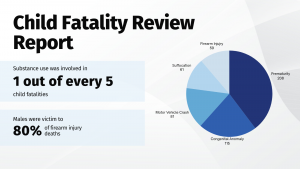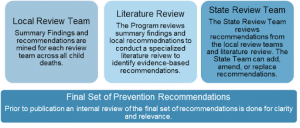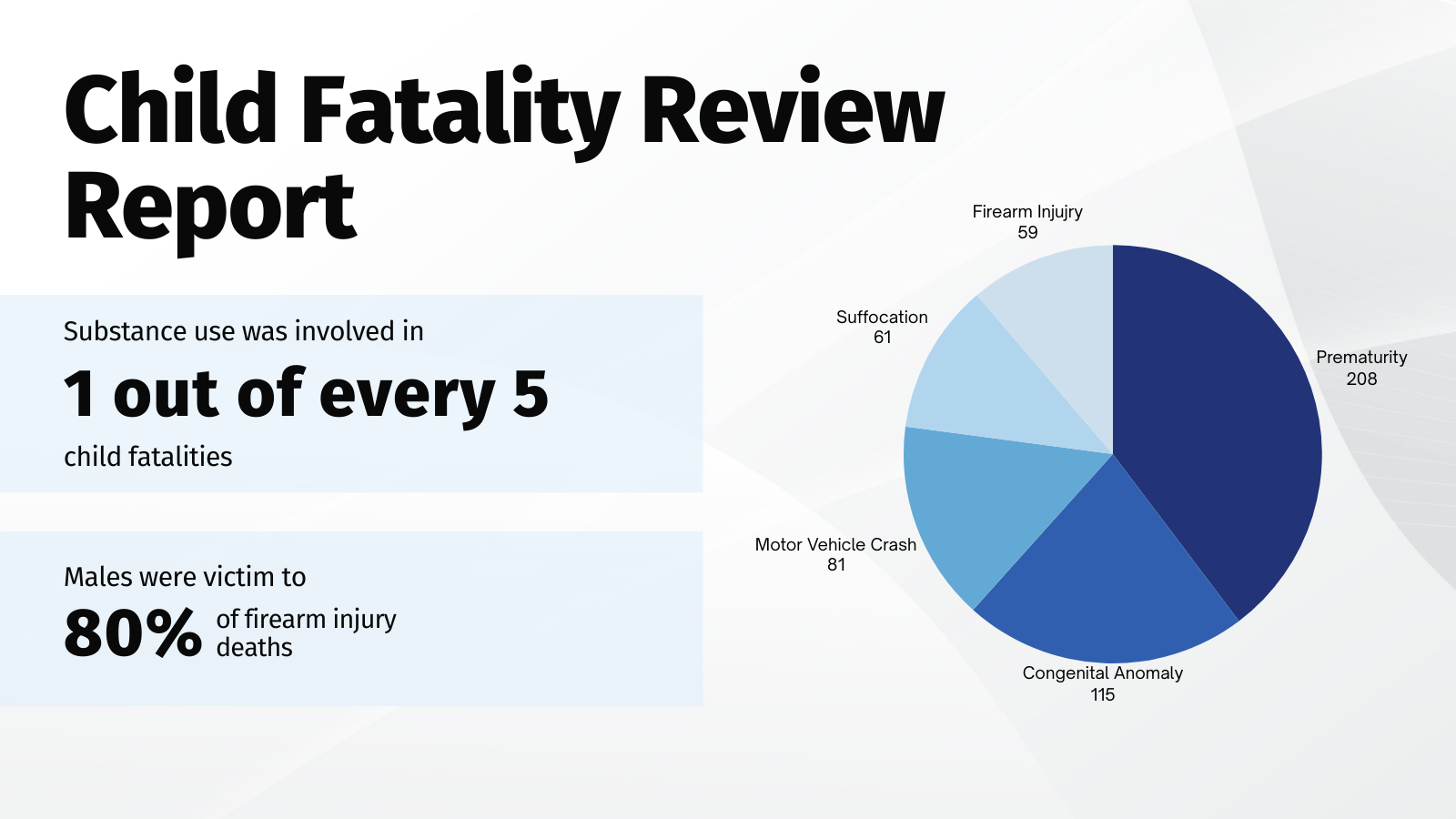 The death of a child is a devastating tragedy, forever changing a family and the community. This week, the Arizona Department of Health Services published the Thirtieth Annual Child Fatality Review Program (CFRP) report, which explores recommendations aimed at averting preventable deaths.
The death of a child is a devastating tragedy, forever changing a family and the community. This week, the Arizona Department of Health Services published the Thirtieth Annual Child Fatality Review Program (CFRP) report, which explores recommendations aimed at averting preventable deaths.
This year marks three decades since the inception of the Arizona Child Fatality Review Program (CFRP). The report focuses on identifying patterns and factors that may contribute to preventable deaths.
While most deaths due to medical conditions are not preventable, deaths due to intentional injuries (such as suicides and homicides) and unintentional injuries (such as drowning, suffocation, or motor vehicle crashes) are preventable.
The data in the report covers all child mortalities in 2022. Last year, Arizona witnessed a tragic toll on its youngest citizens, with 875 Arizona children losing their lives, and 390 of those deaths a result of preventable causes, highlighting the need for intervention and preventive measures.
In 2022, the infant mortality rate increased by 11% compared to the previous year. The leading causes of overall childhood mortality were prematurity, congenital anomalies, motor vehicle crashes, suffocation, and firearm injuries.
A snapshot of child fatalities and recommendations:
Neglect/Abuse
- Neglect and/or abuse contributed to 146 deaths (17% of all deaths), a 12% increase from the previous year.
- Eighty-two children who died of neglect and/or abuse were younger than 5-years-old.
- Parental substance use history and poverty emerged as the most common risk factors.
- Recommendations emphasize investing in the financial well-being of families, including increasing access to concrete supports such as food, housing, and child care to reduce neglect risk and the need for foster care.
- Increasing awareness of Adverse (and Positive) Childhood Experiences was also identified as an educational opportunity for decreasing the prevalence of neglect and/or abuse.
Firearm injury deaths
- There were 59 firearm injury deaths in 2022.
- Eighty-three percent of firearm injury deaths involved handguns, with parents identified as the most common firearm owners.
- Recommendations call for mental health services and heightened public awareness about the effectiveness of properly securing firearms in the home.
Motor Vehicle Crash (MVC) deaths
- The 2022 MVC death rate for children increased by 11% from the previous year.
- Lack of a seatbelt or child restraint was the highest risk factor for MVC deaths.
- Recommendations call for continuing awareness and education related to the proper installation of child safety seats.
Substance use-related deaths
- Despite a 9% decrease in substance use-related deaths, 163 children lost their lives due to substance use, all of which were preventable.
- In 50% of the substance use-related deaths, the child was using alcohol or drugs.
- Thirty-four children succumbed to fentanyl poisoning, including eight kids under the age of 5.
- Recommendations include secure medication storage, conducting universal screening for substance and increasing adolescent well-visits, and improving access to mental health and substance use treatment programs.
Sudden Unexpected Infant Deaths (SUIDs)
- There were 74 sudden unexpected infant deaths, marking a 13% increase from the previous year.
- A staggering 97% of these deaths resulted from unsafe sleep environments and 96% were preventable.
- Recommendations include educating caregivers on the ABCs of safe sleep—Alone, on their Back, in a Crib, discouraging the use of rocking sleepers, nursing pillows, and infant loungers for sleep, and parents avoiding substance use during pregnancy and after birth.
- The Arizona Women Infants and Children Program (WIC) and Strong Families home visiting programs play a key role in supporting parents and caregivers.
Prematurity
- There were 208 prematurity-related deaths in 2022, making this the leading cause of death for infants 0-27 days old.
- Recommendations emphasize the importance of prenatal care and increasing awareness of resources like the Arizona Smokers Helpline (ASHLine/1-800-556-6222) and the Opioid Assistance Referral Line (OAR Line 1-888-688-4222).
Infectious diseases
- Ten percent of child deaths were attributed to infectious diseases, including 17 deaths due to COVID-19 and nine deaths due to congenital syphilis.
- Recommendations emphasize the need for getting tested and/or treated immediately if an individual has symptoms consistent with syphilis or sexually transmitted infections (STI) as stated by the Centers for Disease Control and Prevention (CDC).
- In addition, the authors recommended caregivers obtain COVID-19 vaccinations for all eligible infants, children, and adolescents, including the primary series and/or booster doses as recommended by the American Academy of Pediatrics and the CDC. The Vaccines for Children program offers free vaccines for children whose parents are uninsured or underinsured.
Drowning
- Drowning, the leading cause of death for 1- to 4-year-olds, saw a 33% decrease in 2022.
- Recommendations underscore constant adult supervision around pools/large bodies of water, increased awareness of the need to ensure pools are enclosed, and increased access to affordable swimming lessons.
 The Child Fatality Review Program’s structure includes ten Local Review Teams across the state that conduct initial reviews. The purpose of this approach is to gather information and insights at the local and community level. Oversight and additional reviews then occur at the State Team level to synthesize findings, share best practices, and potentially implement statewide interventions based on the collective knowledge gained. This collaborative and multi-level approach is designed to ensure a comprehensive understanding of the circumstances surrounding child deaths and to support the development of effective strategies for prevention.
The Child Fatality Review Program’s structure includes ten Local Review Teams across the state that conduct initial reviews. The purpose of this approach is to gather information and insights at the local and community level. Oversight and additional reviews then occur at the State Team level to synthesize findings, share best practices, and potentially implement statewide interventions based on the collective knowledge gained. This collaborative and multi-level approach is designed to ensure a comprehensive understanding of the circumstances surrounding child deaths and to support the development of effective strategies for prevention.
As difficult as the subject matter of the report is, it’s important to fully understand the realities of child mortality in Arizona and to offer solutions and recommendations to better protect Arizona’s children. For detailed insights and all the recommendations of the report, refer to the full Thirtieth Annual Child Fatality Review Program (CFRP) report.










